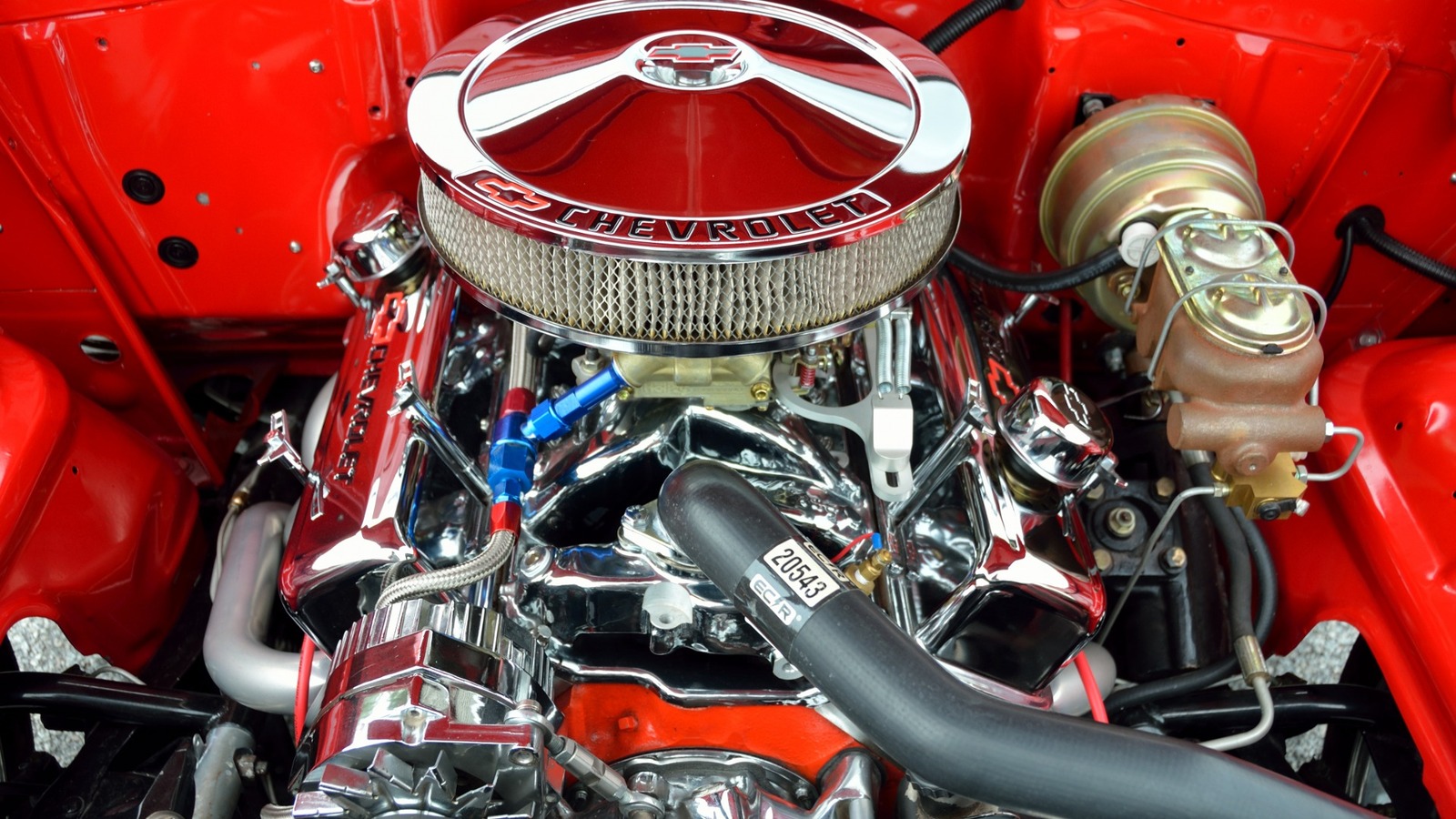The V8 engine holds a special place in the automotive world, known for delivering an exhilarating driving experience that can easily tempt anyone behind the wheel into risky behavior.
These engines are versatile enough to power a wide range of vehicles from compact cars of the 1970s to some of the fastest production cars ever made. However, despite their popularity, not all V8 engines are synonymous with reliability.
While the V8’s birthplace can be traced back to France in the early 1900s, the United States has become its true home. In fact, U.S. manufacturers have the distinction of creating both the best and the worst V8 engines a result of their extensive lineup of engines over the years.
Reliable V8 Engines You Can Trust
For those considering a performance car equipped with a V8 engine, we’ve compiled a list of five engines we believe will endure for a long time with proper maintenance and care. Additionally, we’ve highlighted five V8 engines that we would recommend avoiding at all costs.
Toyota 1UZ-FE
In 1989, Toyota made a significant impact on the automotive world by introducing the Lexus LS400, a full-size luxury sedan that directly competed with high-end German models like the BMW 7 Series and Mercedes-Benz S-Class.
However, the LS400 came at a much more affordable price while offering the same level of luxury and performance. Under its hood was Toyota’s first V8 engine, a 4.0-liter naturally aspirated unit, which quickly gained a reputation for being one of the most reliable V8 engines ever made.
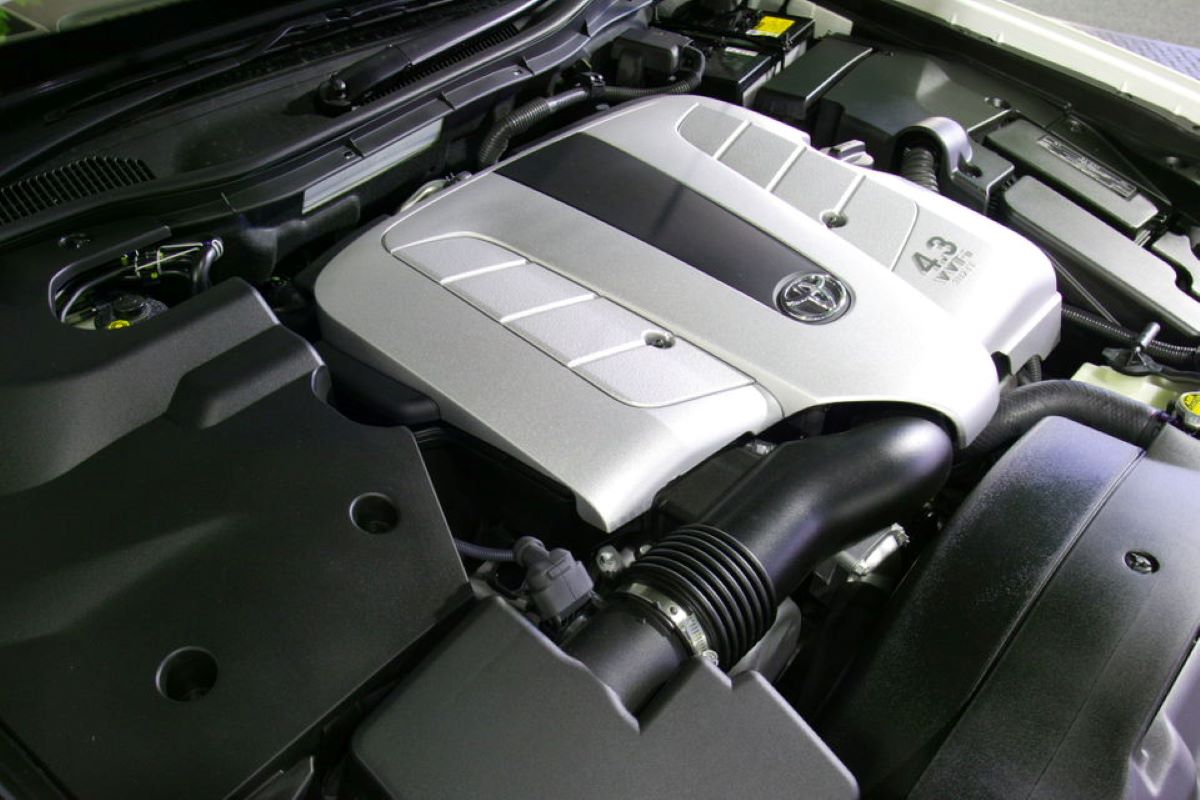
This engine became famous for its durability, with many LS400s reaching over 300,000 miles on original parts. Remarkably, one model even surpassed 1 million miles without requiring any major engine replacements.
The 1UZ-FE is considered an incredible engine, with the potential to continue running well into the future. However, some owners report issues such as timing chain failure and excessive oil consumption, particularly when regular maintenance is not properly followed.
Despite these occasional concerns, the 1UZ-FE remains a standout for its reliability, with the highest mileage reported well over 1 million miles.
Chevrolet Small-Block 350
The Chevrolet 350 V8 is arguably the most widely used V8 engine ever made. It was first introduced in 1967 as a sportier option for the Camaro, before being used in other models such as the Nova and Beaumont.
The engine came in several configurations, including a 4-barrel carburetor, and produced anywhere from 155 hp to 425 hp, which made it a highly versatile engine.
Over the years, the 350 V8 was used in a variety of vehicles, including the Chevrolet Camaro SS, Chevrolet Caprice, Cadillac Fleetwood, Oldsmobile Custom Cruiser, and Chevrolet Corvette.
It became especially popular among hot-rodders for its size, simplicity, and ease of use. General Motors initially sold the tooling for the engine but later bought it back at a significant cost due to the increasing popularity and profits.
Even today, the 350 V8 is more widely used than the LS3, often found in restomods for a range of vehicles, from 1930s Chevys and Cadillacs to Land Rovers and Jaguars.
Despite its enduring popularity, some owners report problems like overheating, usually due to thermostat failure. The highest mileage reported for the Chevrolet 350 V8 is 185,000 miles.
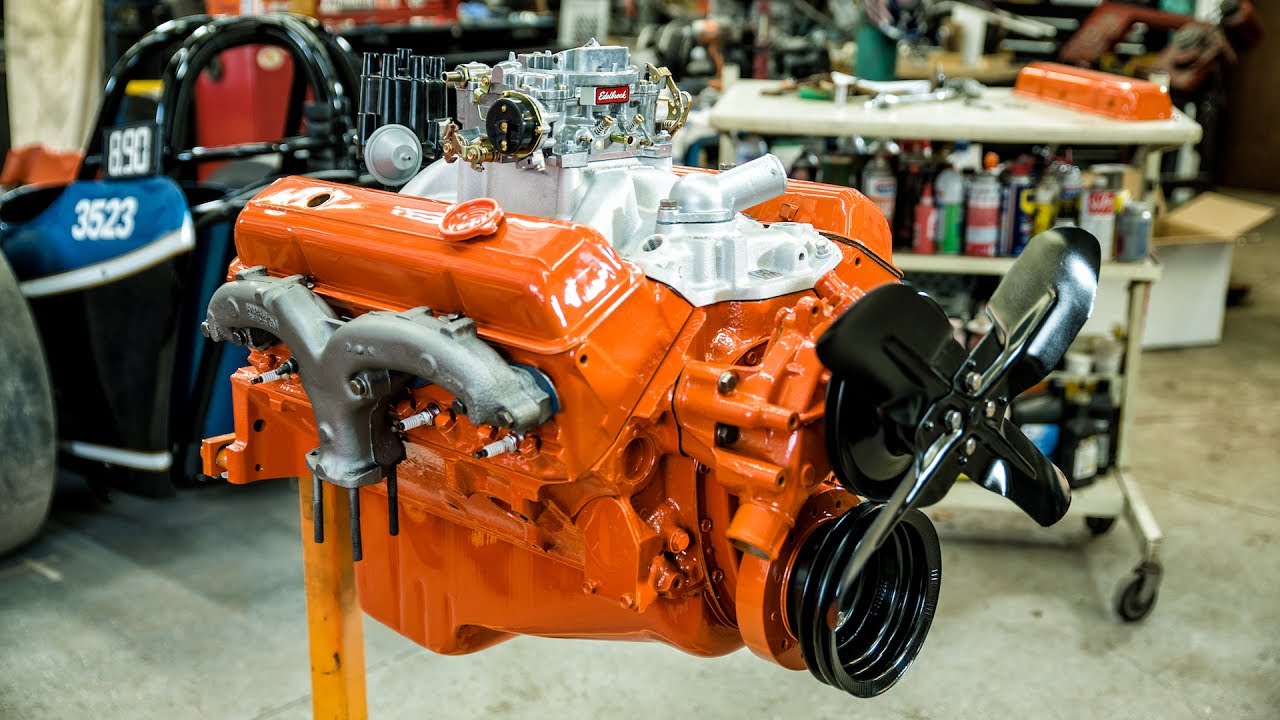
The Chevrolet small-block V-8 undeniably reshaped the landscape of automotive engine development. When it first launched in 1955, it stood out for its innovation and technological edge, setting a benchmark that would heavily influence future V-8 engine designs—not just within General Motors, but across the entire industry.
Its widespread appeal among car enthusiasts helped spawn a massive performance aftermarket dedicated to the platform.
Over time, the small-block Chevy V-8 found its way into an incredibly diverse range of applications, including race cars, off-road vehicles, boats, and even custom-built motorcycles. You’ll also find it powering everything from vintage Ford hot rods to extreme Jeep conversions.
“The small-block Chevy is unquestionably the dominant domestic engine both in terms of sheer numbers and also in terms of longevity,” said Jeff Smith, former senior technical editor. According to Smith, one of the engine’s most compelling traits is its part interchangeability.
“It’s possible to swap a set of heads from a 1990 Vortec truck engine onto the original ’55 265. I doubt another engine was ever built (perhaps the VW flat-four) that allowed you to swap parts from 45 years apart.”
Smith also pointed out the advantages this compatibility gave to aftermarket companies. “The aftermarket loves engines like the SBC because they knew that if they invested in a decent design, like a good-flowing cylinder head or a well-designed performance camshaft, that the design would have a decade or more worth of longevity,” he said.
Supporting Smith’s assessment, Bill Tichenor, director of marketing for Holley Performance Products, emphasized the engine’s impact on the aftermarket. “It is not unreasonable to say Holley has sold more speed parts for small-block Chevys than all other engines combined.
There are great engines from Ford, Chrysler, and others, but the proliferation of cores and affordability of making power with a small-block Chevy made it rise to the top. They certainly have been the engine of choice for street-rodding, Chevy muscle cars and trucks, circle track racing, and a lot of drag cars, as well,” Tichenor stated.
Ford Coyote
The Ford Coyote V8 is an evolved version of the iconic Ford Modular Engine, initially introduced in a 4.6-liter displacement for the SN-95 Mustang.
Over time, Ford made substantial improvements to the engine, ultimately debuting the Coyote V8 in the S-197 Mustang. This engine replaced both the 4.6 and 5.4-liter variants, marking a significant shift for Ford’s performance engines.
First launched in 2010, the Coyote V8 has been featured in several models, most notably the Ford Mustang GT and the Ford F-150. While the Coyote 5.0 shares the same size as the 4.6, it gains the extra displacement through a longer stroke.
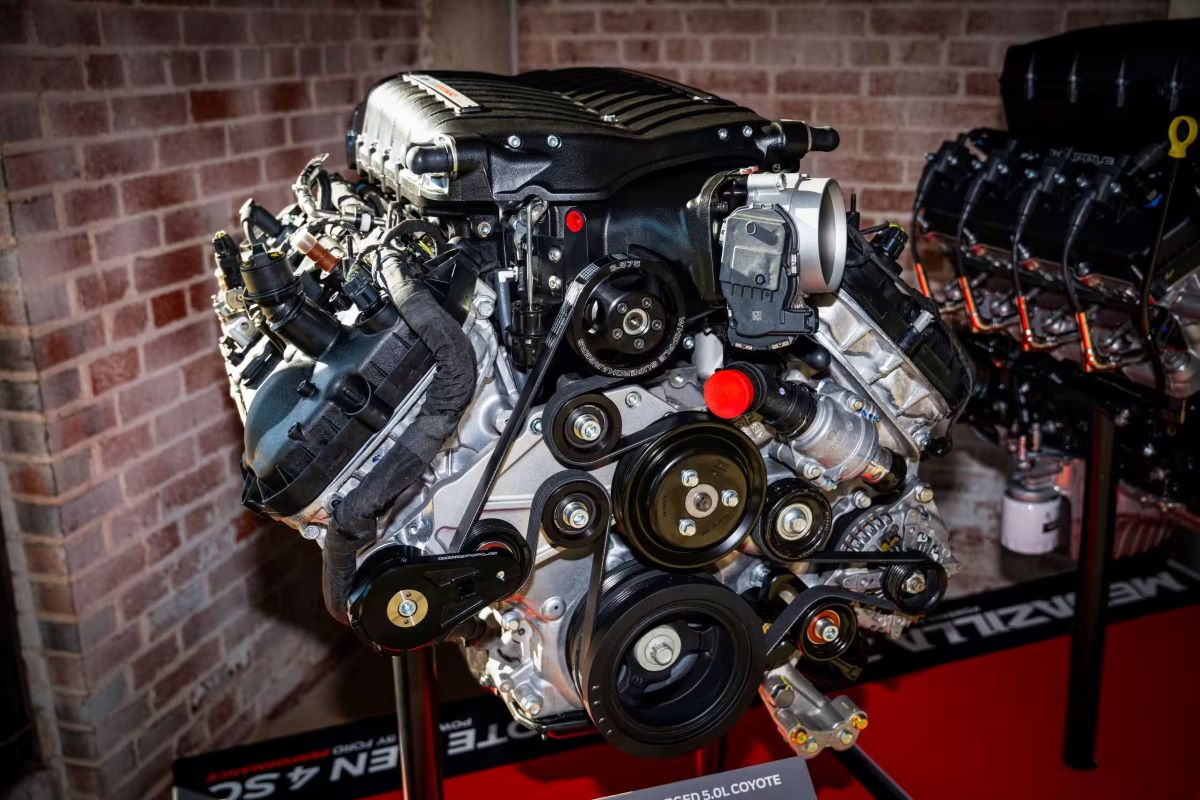
Depending on the specific application, the engine produces anywhere from 360 to 480 hp. Some versions, such as those found in Australian FPVs and British TVRs, can produce between 450 and 550 hp.
For the S650 generation of the Mustang, the Coyote engine was upgraded to produce 486 hp when paired with a manual transmission, only 20 hp less than the top-spec Dark Horse trim.
Despite its impressive performance, some owners have reported issues with head gasket failure in early models, ignition coil failure, and oil leaks. The highest mileage reported for the Ford Coyote V8 is 288,000 miles.
Hyundai Tau 5.0
Hyundai’s Tau V8 engine, the company’s first eight-cylinder powerplant, was produced from 2008 to 2021 before being replaced by a 3.5-liter twin-turbocharged V6.
Initially, the Tau engine had a 4.6-liter displacement and was used in models like the Equus sedan and the Mohave SUV. In 2012, Hyundai introduced the 5.0-liter version of the Tau, which became available in the Genesis sedan.
Production of the engine continued until 2021 when the Genesis brand began producing its own vehicles. The Tau 5.0-liter engine delivers between 407 and 419 hp, providing a notable boost in performance for the cars it powered.
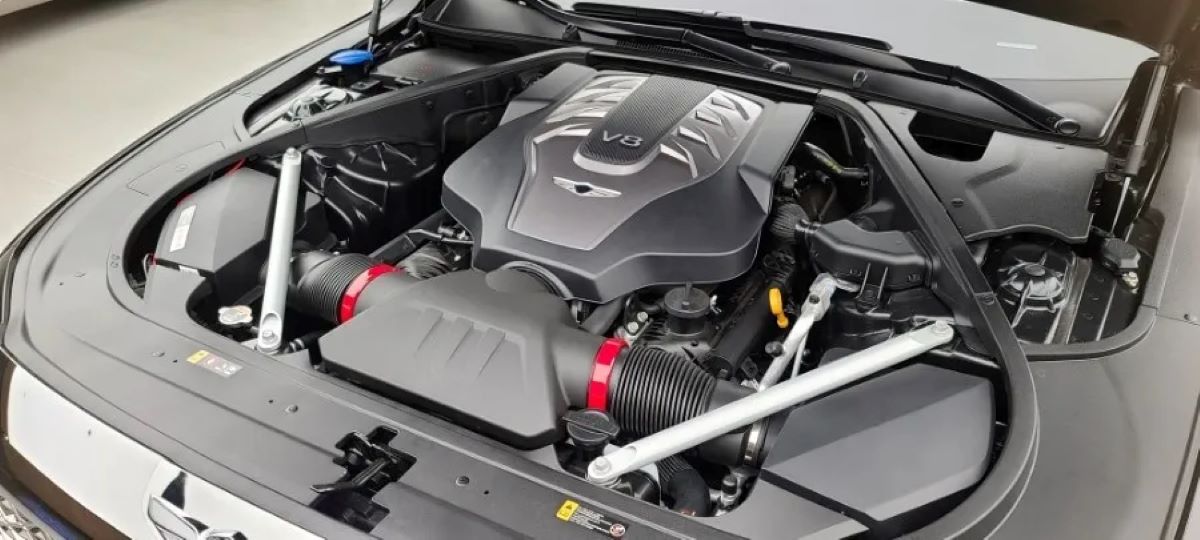
While the Tau is generally reliable, especially given its Korean origins, it did face issues early in its production, particularly between 2012 and 2014, when the engine had a tendency to consume excessive amounts of oil.
Hyundai addressed and resolved this problem, and the Tau V8 engine continued to be dependable throughout its production life, as long as it was properly maintained. Despite its early challenges, the highest mileage reported for the Tau engine is 233,000 miles.
Hyundai’s 5.0-liter V-8 is rated at 429 horsepower. Take that, Mustang! Of course, no one at Hyundai actually made that jab at Ford or its legendary pony car.
In reality, Hyundai hasn’t formally confirmed that power figure. It was shared informally with me—and the rest of the automotive press invited to South Korea to test the Sonata hybrid and 2.0T—by an engineer at the company’s R&D center.
Hyundai America has not provided any official statements, but during the powertrain development tour, I gathered several key technical details. The 5.0-liter Tau engine is effectively an enlarged, direct-injection evolution of the 4.6-liter V-8 currently powering the Genesis sedan.
The bore has been increased to 96 mm—up by 4 mm—while the stroke remains at 87 mm. Preliminary figures, again just estimates, indicate 429 horsepower at 6500 rpm and 376 lb-ft of torque at 5000 rpm, with a compression ratio of 11.5:1.
That puts it ahead of the Mustang GT’s high-revving 5.0-liter V-8, which delivers 412 horsepower, and even eclipses Infiniti’s 5.6-liter V-8 that generates 420 horsepower. For comparison, the current 4.6-liter Tau puts out 375 hp and 333 lb-ft of torque.
This latest version of the Tau engine will be paired with an eight-speed automatic transmission developed and built in-house by Hyundai. The gearbox itself is a noteworthy achievement, as only Toyota and ZF have previously managed to fit so many gears into a single bell housing.
While Hyundai hasn’t officially confirmed anything, the 5.0-liter GDI (short for Gasoline Direct Injection) could make its debut in the U.S. market inside the Genesis sometime around mid-2011.
Toyota 3UR-FE
The Toyota 3UR-FE V8 engine, produced between 2007 and 2021, is one of the most powerful engines Toyota has offered. This 5.7-liter engine, which powered models like the Toyota Land Cruiser, Toyota Tundra, and Toyota Sequoia, was the largest of the Toyota V8 lineup.
Unfortunately, with the latest generation of the Tundra and Sequoia, Toyota has transitioned to a twin-turbocharged V6 engine, completely replacing the V8 found in previous models.
When compared to the V8 engines offered by American manufacturers like Chevrolet, Ford, and Dodge, which feature displacements of 6.2-, 5.0-, and 6.4-liters, respectively, the 3UR-FE remains a formidable powerplant.The 3UR-FE engine produces 381 hp and 402 lb-ft of torque across all applications.
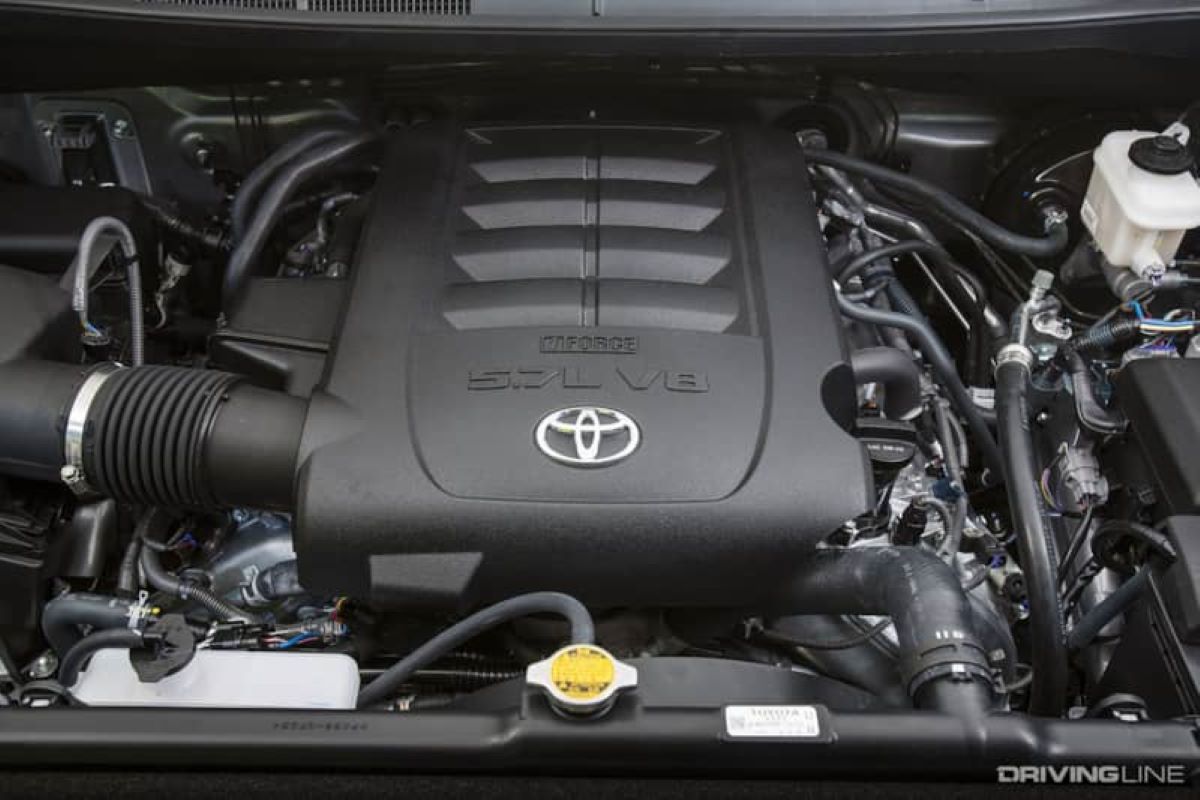
For a limited time, some Toyota dealerships in the U.S. offered a supercharger kit from Toyota Racing Development (TRD), which increased the engine’s output to 504 hp and 550 lb-ft of torque, turning it into a significantly faster and more powerful engine.
Later, tuning company Magnusen improved the supercharger, pushing the output to 550 hp, while matching the torque figures. Despite its strength, the 3UR-FE has faced some reliability issues.
Owners have reported problems such as high oil consumption, camshaft tower leaks, and water pump failure. However, the engine has proven its durability, with the highest reported mileage reaching 330,000 miles.
V8 Engines That Failed
The V8 engine holds an iconic place in the history of American motoring. Simply hearing the term “V8-powered classic American muscle car” is enough to send shivers down the spine of any true gearhead.
From the introduction of the Chevy small-block V8 in 1955, through the intense horsepower battles of the 1960s, to the modern era of hypercars boasting over 750 horsepower, the V8 has a rich legacy worth celebrating or perhaps more fittingly, worth roaring about.
Though closely tied to American automotive culture, the V8’s origins actually lie in France with inventor Leon Levavasseur. The engine was initially designed for use in the early aviation industry.
However, those first versions lacked sufficient power for aircraft and instead found success powering racing speedboats.
Later developments improved performance, making the V8 suitable for aviation, and in fact, it is credited with powering the first flight to reach an altitude of 3,600 feet in 1910.
To grasp how revolutionary the V8 concept was at the time, it helps to remember that during the early 1900s, even a three-cylinder engine was considered technologically advanced.
It didn’t take long for American manufacturers to adopt and refine the V8 design. Cadillac became the first automaker to mass-produce a V8 engine in 1914.
From there, the American V8 flourished and became a symbol of power and performance, until the advent of strict emissions and fuel economy regulations in the early 1970s led to the decline of the muscle car era.
Yet, as we’ll explore in the sections that follow, not every American V8 was a shining achievement. Some engines were disappointingly weak, others plagued by reliability issues, and many simply failed to meet the expectations placed upon them.
Oldsmobile LF9 V8
The Oldsmobile LF9 diesel V8 was launched in 1978 as General Motors’ response to tightening environmental regulations and the lingering effects of the 1973 oil crisis.
Many assume the LF9 was merely a modified version of GM’s gasoline-powered 350 cubic-inch small-block V8, but that’s not the case.
Although it shared the same displacement, head bolt pattern, and several components with its gasoline counterpart, the LF9 had a specially designed, reinforced engine block that was unique to the diesel application.
Unfortunately, this unique construction did little to redeem the engine’s poor performance and reliability.
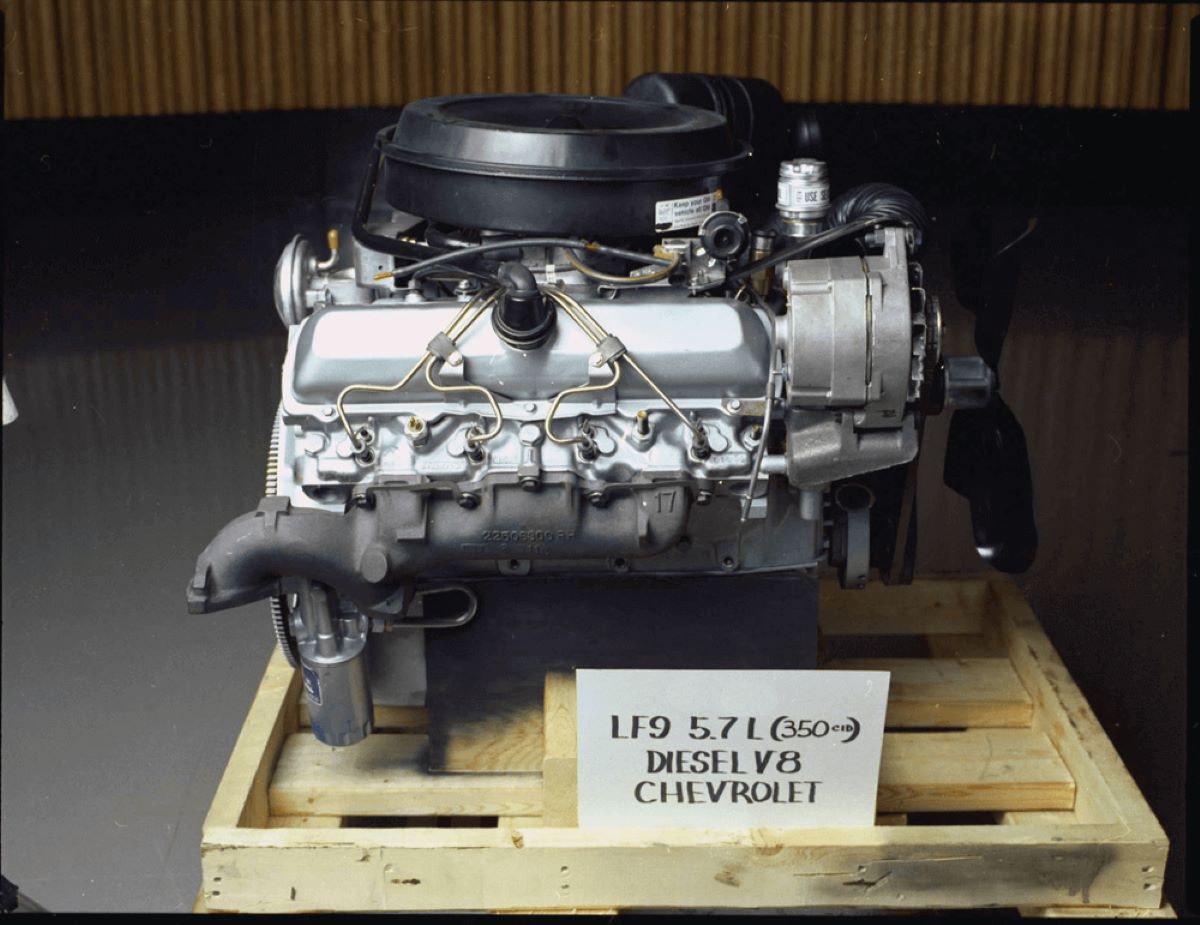
At first, the 5.7-liter LF9 appeared to be a promising step forward. It debuted in the Delta 88 and 98 on September 13, 1977, and sold an impressive 60,000 units in its first year.
Sales further increased with the engine’s use in Cadillac Sevilles and Chevrolet C-10 pickups, bringing the total to 129,000 units. However, this would be the peak of the LF9’s success.
One of the engine’s most glaring issues was its head gasket, which failed frequently due to head bolts that were insufficiently robust.
Another serious design flaw was the lack of a water separator, which allowed moisture to infiltrate the fuel system and sometimes destroy the fuel injection pump. Performance was equally disappointing.
The first-generation LF9 produced just 120 horsepower an extremely low figure for a 5.7-liter V8. The engine’s shortcomings ultimately caused American consumers to shy away from diesel power for years to come. It wouldn’t be a stretch to say that the LF9 “put the ‘die’ in diesel.”
Chevrolet 262 Small Block V8
Not every V8 developed in America was destined to be a classic, and the Chevrolet 262 cubic-inch (4.3-liter) small block, introduced in 1975, is a perfect example.
Arriving at a difficult moment in the automotive industry when stricter emissions standards and soaring fuel prices were reshaping engineering priorities the 262 aimed to offer better efficiency while retaining the power and allure traditionally associated with V8 engines.
Unfortunately, it failed to deliver on either front. While it did help prolong the presence of V8s during an era of uncertainty, it was more of a stopgap than a standout.

The 262 was the smallest and least powerful engine of the first-generation Chevrolet small-block family. Its 4.3-liter displacement was less than what is now found in many six-cylinder engines, and it only produced 110 horsepower.
This lackluster performance doomed the engine, and GM ceased production in late 1976, just two years after it was introduced.
During its brief run, the 262 was used in only three General Motors vehicles: the Chevrolet Monza, the Chevrolet Nova, and the Pontiac Ventura. It was soon replaced by the more capable 305 cubic-inch V8 in 1977.
Chrysler Lean-Burn V8
When it comes to problematic V8 engines, a clear trend emerges: many were attempts to adapt to new efficiency and environmental demands. While GM tackled this with a diesel (LF9) and a downsized gasoline engine (262), Chrysler chose a different path.
Their solution was a large, gasoline-powered V8 featuring what they called “lean-burn” technology. The idea had potential, but the execution left much to be desired.
First introduced in 1976, the lean-burn engine featured an early version of computerized spark control.
At the time, this was a significant technological step especially considering that same year marked the debut of the first Apple computer by Steve Wozniak and Steve Jobs. In certain respects, Chrysler’s innovation worked.
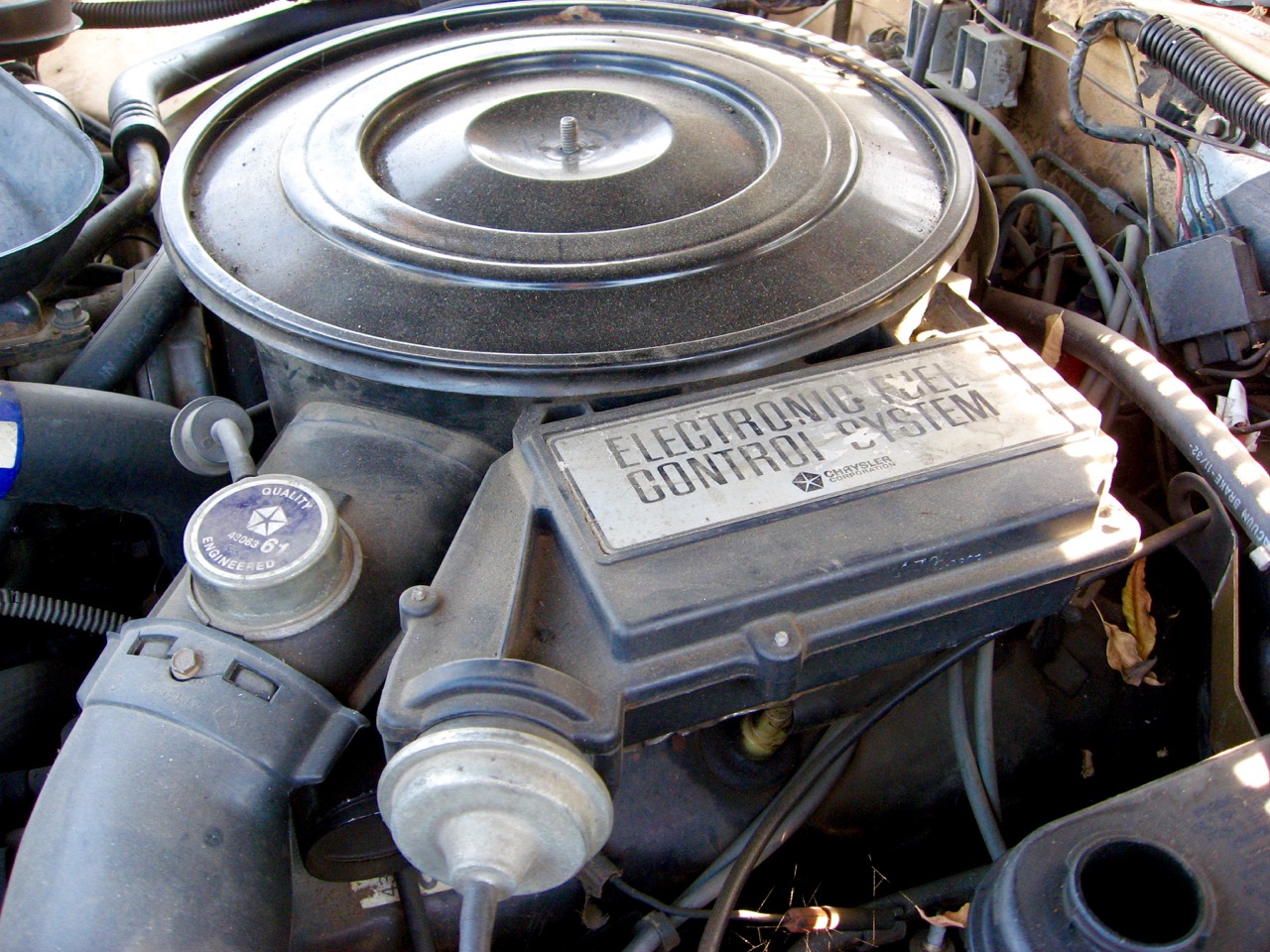
The lean-burn system helped the company meet emissions requirements without needing a catalytic converter.
For example, a 1976 Road & Track test showed that a lean-burn V8-equipped Chrysler Cordoba achieved 2.5 more miles per gallon than a Hemi-powered Dodge Charger.
However, a critical design flaw undermined this progress. Chrysler chose to mount the engine control computer directly on the air cleaner, which subjected it to constant heat and vibrations conditions that eventually led to failure.
The lean-burn V8 suffered from frequent vacuum leaks and faulty sensors, severely affecting its reliability. In the end, more sophisticated electronic fuel injection systems and engine control technologies would do what Chrysler’s lean-burn V8s could not.
Cadillac 8-6-4 L62
When does a V8 engine turn into a V4? The answer lies with Cadillac’s 8-6-4 L62 engine. This powerplant represented another effort to boost fuel efficiency in V8 engines without sacrificing too much top-end performance.
It was also an early example of computerized engine management. Unlike systems that adjusted how much fuel was being used, this system controlled how many cylinders were using fuel.
When the car didn’t need full power, a computer would activate solenoids on the rocker arms to disable either two or four of the cylinders.
When more power was needed, the computer re-engaged all eight cylinders. The concept was promising, but its execution left much to be desired hence its place on this list.
The end result was a complete disaster. This was 1981, and once again, computers were simply not advanced enough to keep up with the demands placed on them.
Despite the microprocessor being theoretically capable of making 300,000 decisions per second, it was still too slow to effectively manage the transitions between cylinder modes.
This led to drivability problems, with cars often hesitating or behaving as if they were constantly searching for the correct gear. Even after Cadillac issued 13 software updates in just the first year, the core issues were never truly fixed.
The only reliable solution was to disable the cylinder deactivation system entirely and run the engine permanently in V8 mode.
In hindsight, the Cadillac 8-6-4 wasn’t fundamentally flawed in concept it was simply ahead of its time. With modern computer systems, cylinder deactivation is now a standard and successful feature in many GM and other manufacturers’ engines.
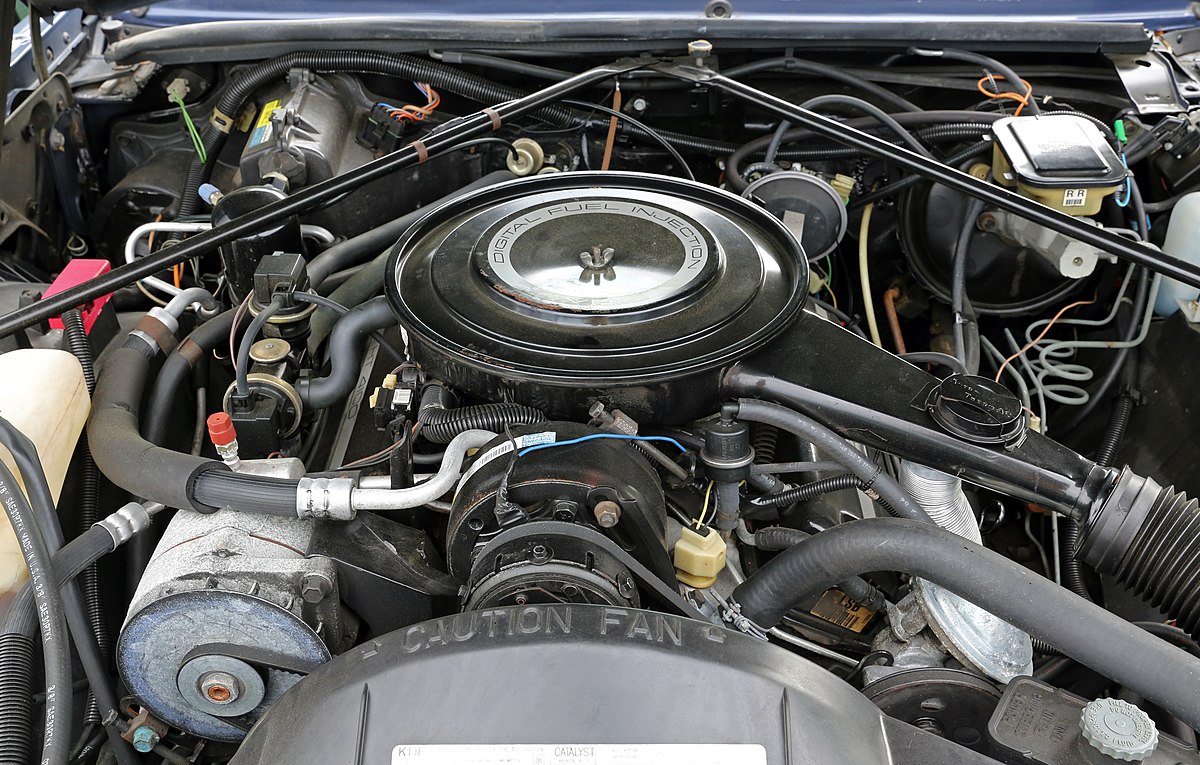
Cadillac’s ill-fated V8-6-4 engine was offered for just a single model year, yet it left a lasting and deeply negative impression on the legacy of GM’s luxury brand.
Today, cylinder deactivation systems are common in the automotive world. Known by names like Active Fuel Management and Modulated Displacement, these systems deactivate specific cylinders during light engine loads to enhance fuel efficiency. And they generally work quite well—cutting fuel consumption while operating so seamlessly that most drivers never even notice.
But things didn’t go nearly as smoothly when General Motors’ Cadillac division introduced an early version of this technology back in 1981. Branded as the V8-6-4, the system turned out to be a major failure and was dropped after just one year on the market.
Officially named the L62 V8, the V8-6-4 was essentially a modified version of Cadillac’s 368-cubic-inch (6.0-liter) V8 engine.
The key difference was a set of electronic solenoids mounted on cylinders 3, 4, 5, and 6, which could deactivate the rocker arms for those cylinders based on commands from the engine’s electronic control module—referred to as the ECM, or the CCM in Cadillac terminology.
These solenoids and their related components were housed in tall rocker covers, as pictured above. For the 1981 model year, the L62 V8 came standard in every gasoline-powered Cadillac.
The system worked by monitoring various parameters—engine speed, vehicle speed, engine load, and more—to determine when to deactivate cylinders. It could shut off two cylinders to simulate a 4.5-liter V6 or four cylinders to mimic a 3.0-liter V4. Developed by Eaton Corporation, a major supplier to the auto industry, the system promised the benefits of both performance and efficiency: a strong V8 when you needed power, and a frugal V6 or V4 during cruising. That was the theory, at least.
Drivers could observe the V8-6-4 in action via the MPG Sentinel, a digital gauge cluster display that showed fuel economy and mode status at the push of a button (as seen in the white circle below).
However, in practice, no display was needed to tell when the system was active—it was immediately obvious due to the rough behavior it caused. Bucking, shuddering, and erratic performance made its presence painfully clear.
So, what went wrong? To summarize, the early electronic fuel injection system used by GM at the time simply wasn’t fast or refined enough to manage cylinder deactivation smoothly. Likewise, the solenoids controlling the rocker arms lacked the speed and precision to function effectively.
Performance in four-cylinder mode was as dismal as one might expect, and the system had a tendency to toggle unpredictably between four, six, and eight-cylinder operation at steady speeds, leading to further drivability issues.
The technology simply wasn’t mature enough yet—true cylinder deactivation wouldn’t become viable for over a decade.
After more than a dozen revisions failed to resolve the issues, Cadillac discontinued the V8-6-4 at the end of the 1981 model year.
Dealers were even advised to disable the system for customers experiencing problems. The V8-6-4 remains one of the most notable missteps in Cadillac’s V8 history—though regrettably, it would not be the last.
Cadillac HT4100 V8
Cadillac didn’t catch a break. After the failure of the 8-6-4 engine, the company was eager to win back consumer confidence and reclaim its prestige.
Unfortunately, the HT4100 V8 was not the engine to do that. “HT” stood for High Technology, while “4100” referred to the engine’s 4,100 cubic centimeter (4.1-liter) displacement.
It featured a lightweight aluminum block, cast-iron cylinder heads, and a throttle body fuel injection system that was advanced for its time.
On paper, it appeared to be a modern and efficient V8. In practice, however, it quickly proved to be a major disappointment, delivering only 135 horsepower and 200 lb-ft of torque.
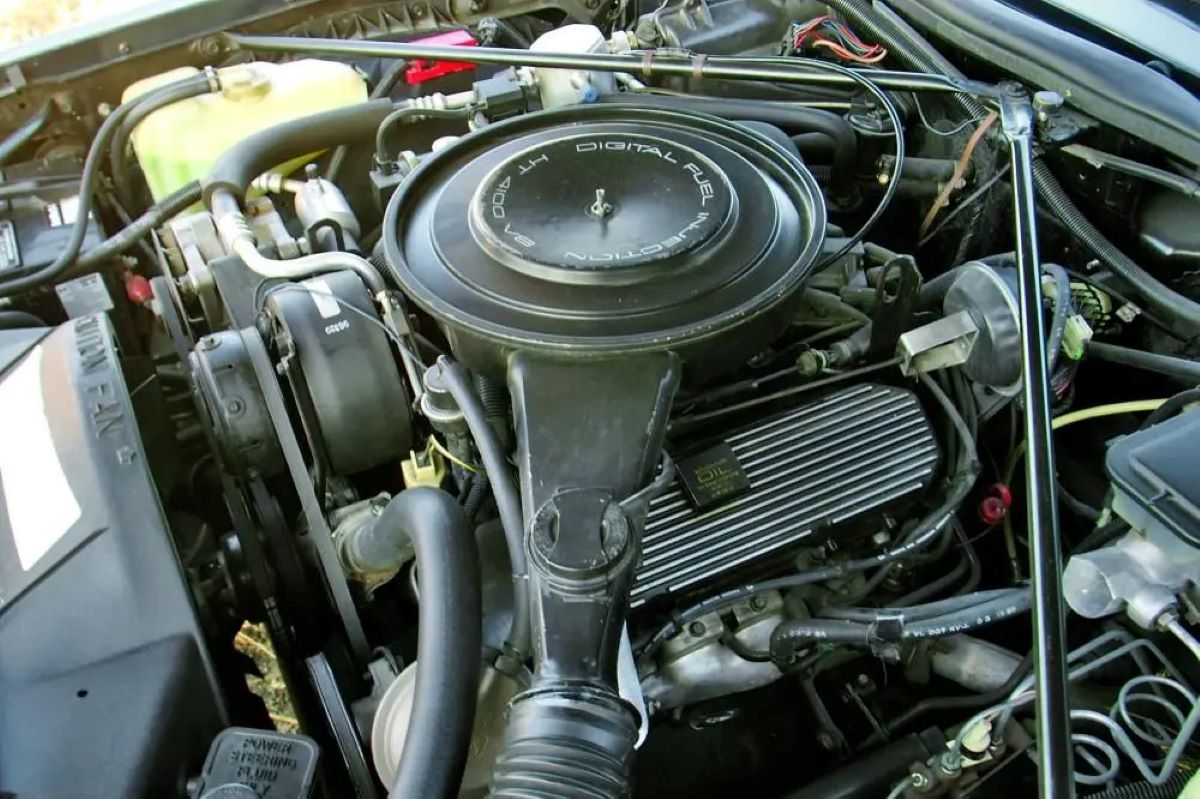
The aluminum block that was meant to reduce weight soon became one of the engine’s most critical vulnerabilities. The use of cast-iron head bolts in combination with the softer aluminum led to frequent head gasket failures, especially under high-heat conditions.
This issue was compounded by the HT4100’s notorious tendency to leak coolant, making overheating a common and serious problem. Furthermore, the engine had been rushed into production in 1982 following a shortened development cycle.
What was supposed to be a technological leap forward turned into a cautionary tale.
The HT4100 came to symbolize the risks automakers face when bold innovation outpaces practical engineering proving that even the most storied luxury brands can stumble when they move too fast.
During the 1980s, General Motors had a rough stretch, releasing a series of underperforming engines. In an attempt to recover from the embarrassment of the infamous V8-6-4—which had failed largely due to issues with its cylinder deactivation technology—GM introduced the HT4100 V8. The name stood for “High Technology,” with “4100” indicating the engine’s displacement.
True to its label, the HT4100 V8 brought a few notable innovations to the table. It featured a throttle-body fuel-injection system and a lightweight aluminum engine block reinforced with cast iron cylinder sleeves—an advanced design for the time.
This engine was used across the Cadillac lineup from 1982 to 1987. Upon release, it earned praise for its smooth performance, something that was increasingly rare for GM during the early part of the decade. However, it didn’t take long for customers to realize that the engine lacked power.
Producing just 125 horsepower and 257 Nm of torque, it fell short even compared to the 4.1-liter Buick V6, which also made 125 horsepower but delivered 284 Nm of torque—and did so more efficiently.
Problems with the HT4100 V8 quickly piled up. Drivers frequently experienced head gasket failures, coolant leaks, and oil pump malfunctions. To make matters worse, replacement parts came at a high cost, and many mechanics were reluctant to work on the engine due to its complex design and unreliable reputation.
This made the HT4100 yet another black mark in GM’s engine history. The alternative at the time, a 5.7-liter V8 diesel producing 105 horsepower and 271 Nm of torque, was also riddled with its own serious reliability concerns.
That left GM loyalists with one solid option: the 4.1-liter Buick V8. While it didn’t have the technological bells and whistles of the HT4100, it proved to be far more dependable and largely free from the issues that plagued its high-tech counterpart.
Although GM would go on to develop other problematic engines in later years, the HT4100 V8 remains arguably the worst engine the company ever produced.

